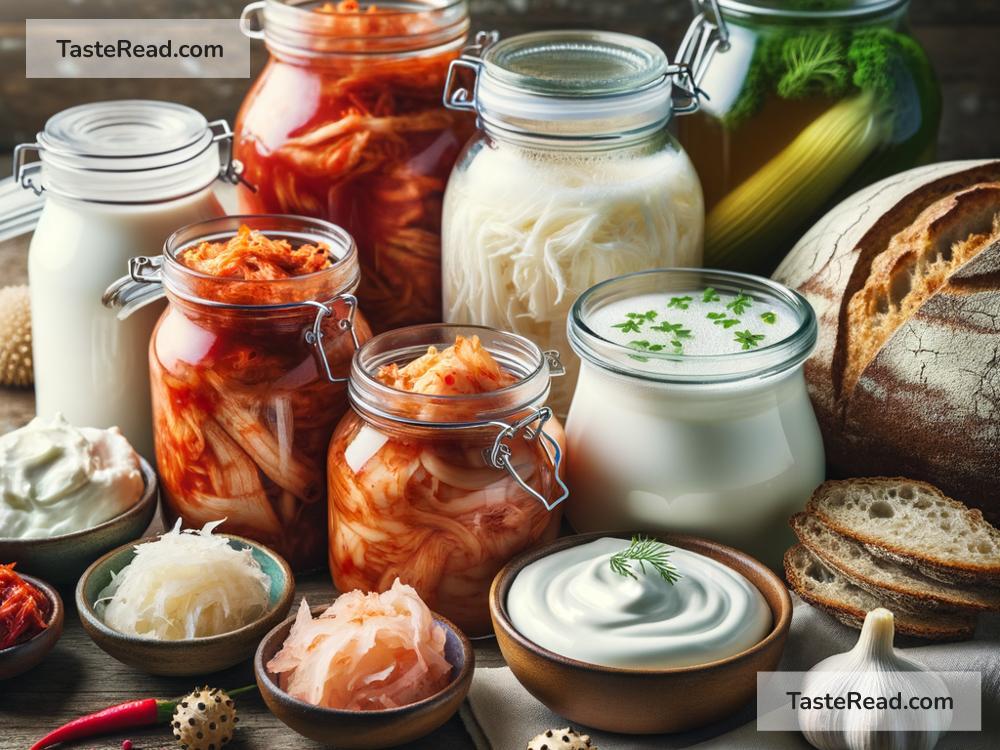The Science of Fermentation: Benefits and Methods
Fermentation is a fascinating process that has been used by humans for thousands of years to preserve food, enhance flavors, and improve nutrition. But did you know that fermentation is also grounded in science? In this blog, we’ll explore the wonders of fermentation, its benefits, and the simple methods you can try at home. Let’s dive into the world of tiny microbes and delicious transformations!
What is Fermentation?
At its core, fermentation is a natural process in which microbes like bacteria, yeast, or fungi break down sugars into simpler compounds, such as alcohol, carbon dioxide, or acids. These transformations give fermented foods and drinks their unique taste, texture, and health benefits.
Fermentation happens because these tiny organisms are hungry! When microbes consume sugars, they create byproducts that change the makeup of the food or drink, preserving it and sometimes turning it into something entirely new. Some examples of fermented foods include yogurt, cheese, sauerkraut, kimchi, sourdough bread, kombucha, and even beer and wine.
Though it sounds complicated, fermentation is surprisingly easy, and it doesn’t require much equipment or expertise. People around the world have been using this process for centuries, often without fully understanding the science behind it. Today, we know more about how it works — and it’s fascinating!
How Does Fermentation Work?
Fermentation is powered by microbes. These tiny organisms eat the carbohydrates (like sugars or starches) in the food and start producing chemicals as waste products. There are three main types of fermentation:
-
Lactic Acid Fermentation: This process involves bacteria like Lactobacillus, which turn sugars into lactic acid. This is the magic behind yogurt, sourdough bread, kimchi, and sauerkraut. The lactic acid gives these foods their tangy taste and helps preserve them.
-
Alcoholic Fermentation: Yeasts such as Saccharomyces cerevisiae consume sugar and turn it into alcohol and carbon dioxide. This is how beer, wine, and spirits are made. It also helps bread rise by trapping bubbles of CO2 in the dough.
-
Acetic Acid Fermentation: Certain bacteria turn alcohol into acetic acid. This process creates vinegar, which has a sharp and sour flavor.
Fermentation is typically carried out in an environment where microbes can thrive — often in warm, moist conditions with minimal air exposure to prevent spoilage. The food or drink being fermented acts as the perfect home for these microbes to do their work.
The Benefits of Fermented Foods
Fermented foods are more than just delicious; they’re also packed with health benefits. Here’s why you might want to add more fermented goodies to your plate:
-
Better Digestion: Fermented foods often contain probiotics — live, beneficial bacteria that support gut health. Your gut is home to trillions of microbes that help digest food, produce vitamins, and maintain a strong immune system. Probiotics can improve digestion, ease bloating, and even reduce the risk of some digestive issues.
-
Enhanced Nutrition: During fermentation, microbes break down complex nutrients into simpler forms, making them easier for your body to absorb. For example, fermented soy products like miso and tempeh are rich in amino acids and enzymes that boost protein absorption.
-
Extended Shelf Life: Fermentation is a natural way to preserve food. The acids, alcohol, and other fermentation byproducts inhibit harmful bacteria and mold, keeping the food safe to eat for longer periods.
-
Immunity Boost: A healthy gut is key to a strong immune system, and probiotics from fermented foods play an important role in maintaining this balance. Some studies have also found that fermented foods contain antioxidant compounds that can support overall health.
-
Unique Flavors: Fermentation creates rich and complex flavors that are hard to achieve with any other cooking method. From the tangy taste of sourdough bread to the fizzy sweetness of kombucha, fermented foods are a treat for the taste buds.
Methods of Fermentation You Can Try at Home
Fermenting your own food is easier than you might think! Here are a few simple methods to get started:
-
Making Yogurt
Heat milk and add a starter culture (like store-bought yogurt with live cultures). Keep the mixture warm for several hours, and voilà — creamy homemade yogurt! -
Fermenting Vegetables
To make sauerkraut or pickled veggies, chop cabbage or other vegetables and pack them into a jar with salt. The salt draws out water, creating a brine where beneficial bacteria thrive. Let it sit at room temperature for several days, then enjoy! -
Brewing Kombucha
Kombucha is fermented tea made using a SCOBY (symbiotic culture of bacteria and yeast) and sweetened tea. After a week or so, the SCOBY will turn the tea into a fizzy drink. -
Baking Sourdough Bread
Start with a mixture of flour and water to create a sourdough starter. Wild yeast and bacteria from the air will ferment the mixture, giving the bread its characteristic tangy flavor and airy texture.
Final Thoughts
The science of fermentation has transformed the way we eat, adding flavor, nutrition, and variety to our diets. By harnessing the power of microbes, people around the world have created some of the most beloved foods and drinks in human history.
If you’ve never tried fermenting at home, don’t be intimidated — it’s a simple process that requires patience more than skill. Experimenting with fermentation can be incredibly rewarding, both for your health and your taste buds. So go ahead and explore the world of microbes, magic, and mouthwatering flavors!


